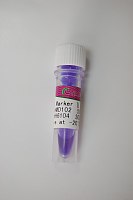Comparative Genome Analysis of Clostridium difficile Using DNA Microarrays
互联网
互联网
相关产品推荐

D15000分子量标准(D15000 DNA Marker)
¥100

Recombinant-Clostridium-difficile-Undecaprenyl-diphosphatase-2uppP2Undecaprenyl-diphosphatase 2 EC= 3.6.1.27 Alternative name(s): Bacitracin resistance protein 2 Undecaprenyl pyrophosphate phosphatase 2
¥11312

Cell Cycle Analysis Kit (with RNase)(BA00205)-50T/100T
¥300

Recombinant-Saccharomyces-cerevisiae-Mitochondrial-inner-membrane-i-AAA-protease-complex-subunit-MGR1MGR1Mitochondrial inner membrane i-AAA protease complex subunit MGR1 Alternative name(s): Mitochondrial genome-required protein 1
¥12474

1 kb DNA分子量标准
¥100
相关问答

